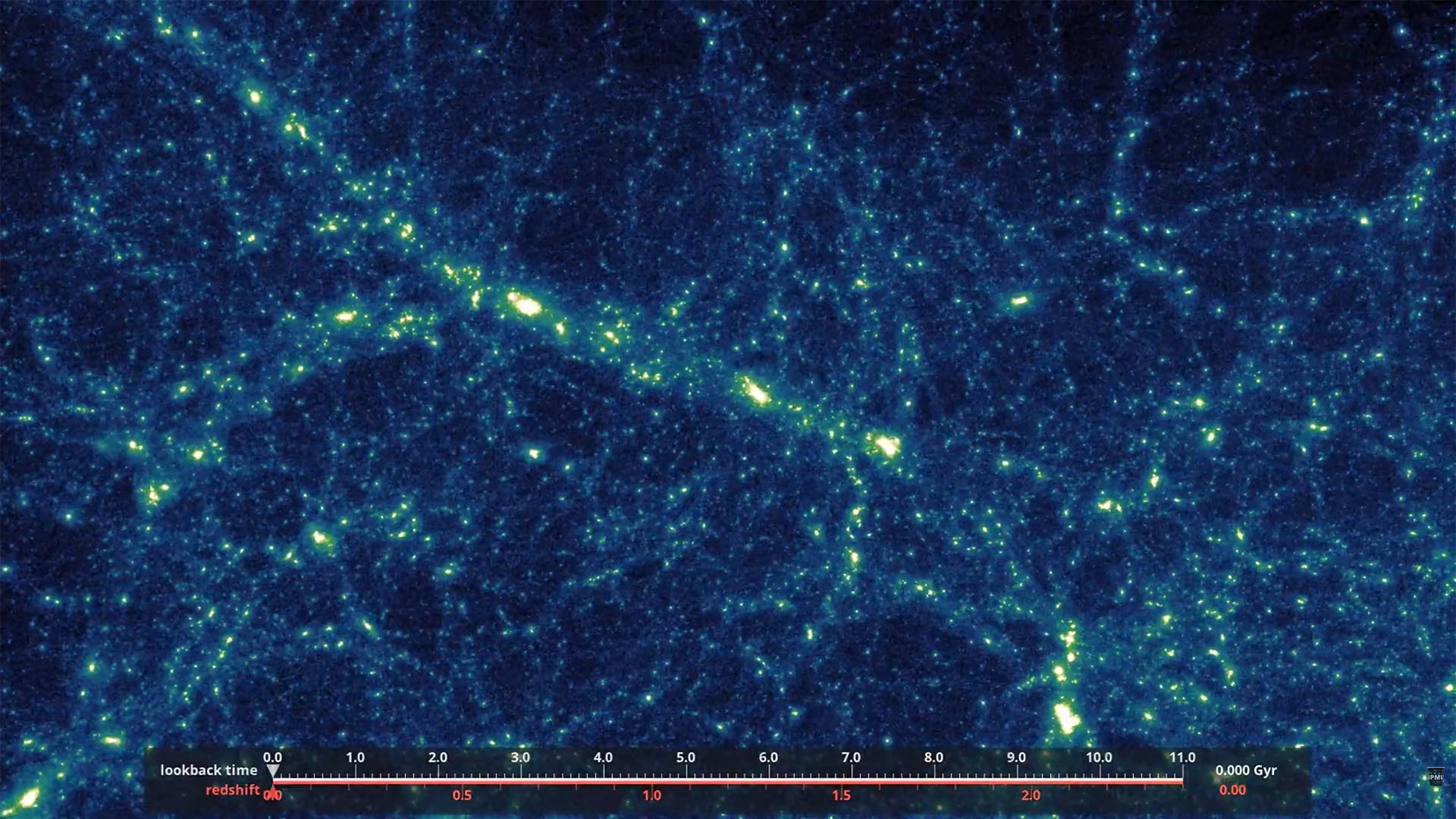Astrophysicists Create “Time Machine” Simulations To Observe the Lifecycle of
Many processes in astrophysics take a very long time, making their evolution tricky to study. For example, a star like our sun has a lifespan of about 10 billion years and galaxies evolve over the course of billions of years.
One way astrophysicists deal with this is by looking at various different objects to compare them at different stages of evolution. They can also look at distant objects to effectively peer back in time, because of the length of time the light took to travel to reach our telescopes. For example, if we are looking at an object 10 billion light years away, we are seeing it as it was 10 billion years ago.
Now, for the first time, researchers have created simulations that directly recreate the full life cycle of some of the largest collections of galaxies observed in the distant universe 11 billion years ago, reports a new study published on June 2, 2022, in the journal Nature Astronomy.
Cosmological simulations are crucial to studying how the universe became the shape it is today, but many do not typically match what astronomers observe through telescopes. Most are designed to match the real universe only in a statistical sense. Constrained cosmological simulations, on the other hand, are designed to directly reproduce the structures we actually observe in the universe. However, most existing simulations of this kind have been applied to our local universe, meaning close to Earth, but never for observations of the distant universe.
A team of researchers, led by Kavli Institute for the Physics and Mathematics of the Universe Project Researcher and first author Metin Ata and Project Assistant Professor Khee-Gan Lee, were interested in distant structures like massive galaxy protoclusters, which are ancestors of present-day galaxy clusters before they could clump under their own gravity. They found current studies of distant protoclusters were sometimes oversimplified, meaning they were done with simple models and not simulations.

Screenshots from the simulation show (top) the distribution of matter corresponding to the observed galaxy distribution at a light travel time of 11 billion years (when the Universe was only 2.76 billion years old or 20% its current age), and (bottom) the distribution of matter in the same region after 11 billion lights years or corresponding to our present time. Credit: Ata et al.
“We wanted to try developing a full simulation of the real distant universe to see how structures started out and how they ended,” said Ata.
Their result was COSTCO (COnstrained Simulations of The COsmos Field).
Lee said developing the simulation was much like building a time machine. Because light from the distant universe is only reaching Earth now, the galaxies telescopes observe today are a snapshot of the past.
“It’s like finding an old black-and-white picture of your grandfather and creating a video of his life,” he said.
In this sense, the researchers took snapshots of “young” grandparent galaxies in the universe and then fast forwarded their age to study how clusters of galaxies would form.
The light from…
Read More: Astrophysicists Create “Time Machine” Simulations To Observe the Lifecycle of

